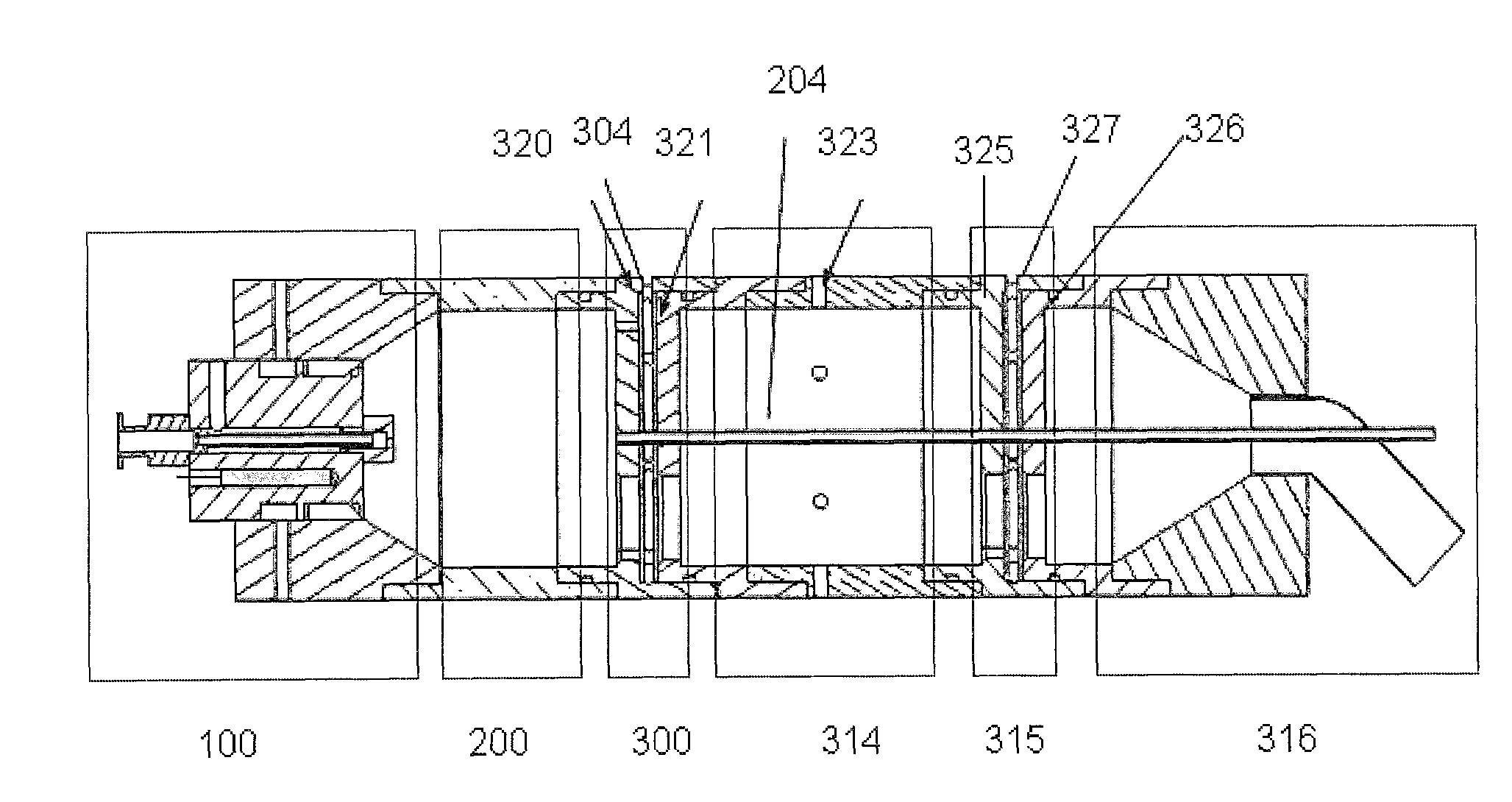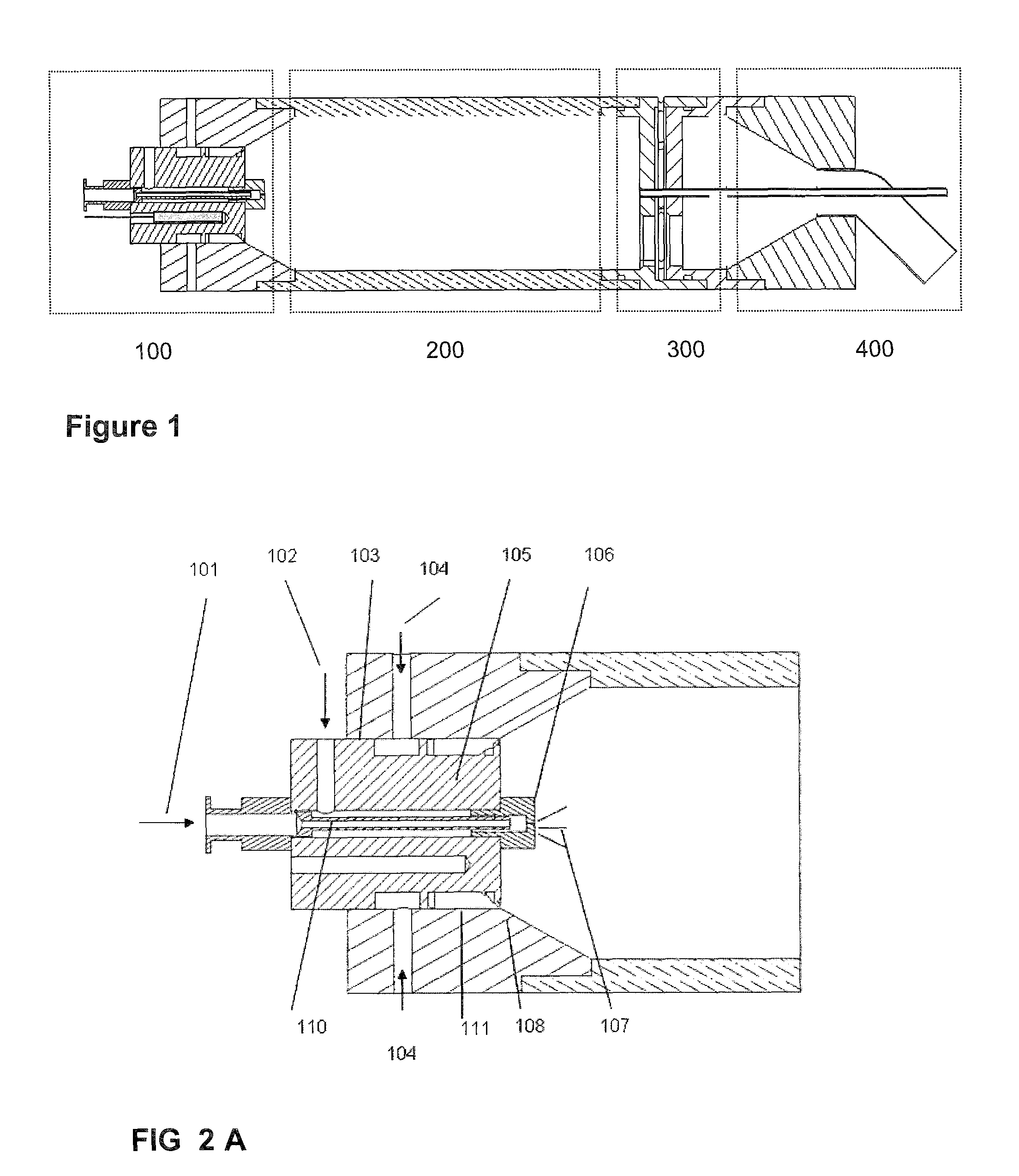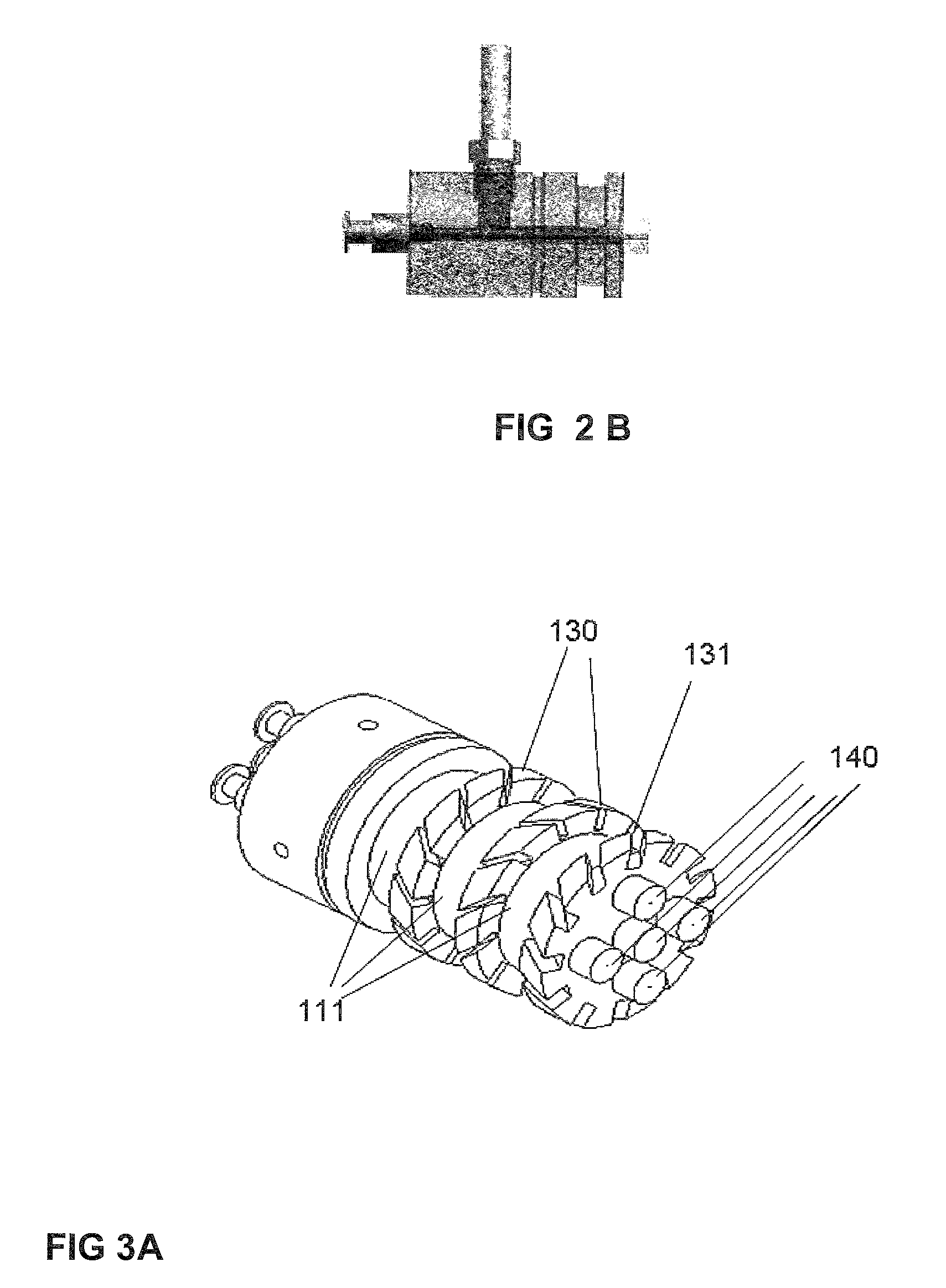Aerosol processing and inhalation method and system for high dose rate aerosol drug delivery
a technology of aerosol and inhalation method, which is applied in the direction of respirator, separation process, transportation and packaging, etc., can solve the problems of nebulizing liquid, prolonging the time period for inhalation, and reducing the safety of inhalation, so as to reduce the risk of shear-induced degradation, the effect of reducing the risk of inhalation
- Summary
- Abstract
- Description
- Claims
- Application Information
AI Technical Summary
Benefits of technology
Problems solved by technology
Method used
Image
Examples
examples
[0111]To evaluate the APIS, five different orifice hole diameters, D=0.15 mm, 0.20 mm, 0.30 mm, 0.38 mm, and 0.5 mm; two capillary tube radii, R0=0.28 mm, 0.55 mm; and two distances H, defined as the tube mouth to the orifice, H=1.0 mm and 1.5 mm; have been tested in a microfluidic flow aerosol generation unit.
[0112]To evaluate the virtual impaction and arrest of the aerosol plume by the counter-flow air jet, photographs of the plume with and without the counter-flow air jet were taken. FIG. 14A is a photograph of the one orifice system. Fluid was injected into the capillary tubing using a syringe pump (Model 600-900VDCM, Harvard Apparatus). Compressed air was provided (Jun Air compressor). Using 1.1 mm diameter capillary tubing, 0.5 mm (0.02″) diameter orifice, and 1.0 mm distance from the open end of the capillary tubing to the orifice, the spray pattern of the aerosol generated by the single-orifice aerosol generator was recorded using a Kodak digital camera (FIG. 14B). The arres...
PUM
| Property | Measurement | Unit |
|---|---|---|
| particle size | aaaaa | aaaaa |
| particle size | aaaaa | aaaaa |
| diameter | aaaaa | aaaaa |
Abstract
Description
Claims
Application Information
 Login to View More
Login to View More - R&D
- Intellectual Property
- Life Sciences
- Materials
- Tech Scout
- Unparalleled Data Quality
- Higher Quality Content
- 60% Fewer Hallucinations
Browse by: Latest US Patents, China's latest patents, Technical Efficacy Thesaurus, Application Domain, Technology Topic, Popular Technical Reports.
© 2025 PatSnap. All rights reserved.Legal|Privacy policy|Modern Slavery Act Transparency Statement|Sitemap|About US| Contact US: help@patsnap.com



